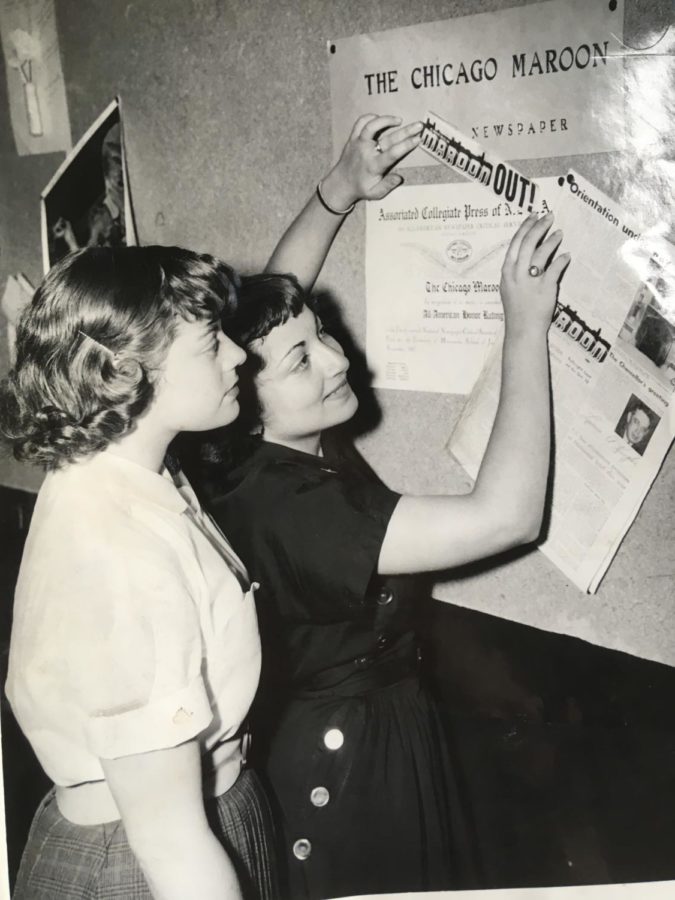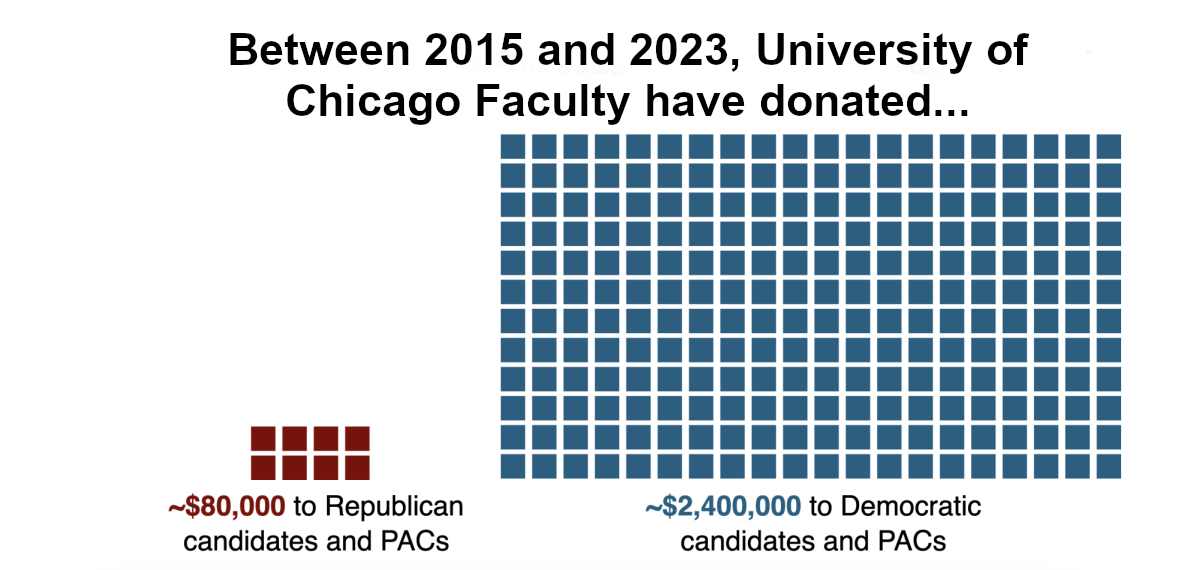Professor Ada Palmer has a penchant for octopuses. She references them frequently in her classes—which, in the past two years, have covered Europe’s intellectual transformations, the Italian Renaissance, a history of skepticism, and a history of censorship—to explain a variety of phenomena from cultural-linguistic shifts to institutional decision-making.
In an interview with The Maroon, Palmer used an octopus to describe the way she sees administrative decisions take shape in the heterogeneous, multifaceted University of Chicago.
“The octopus has a central nervous system, but, in addition, each of the eight limbs has its own separate cognitive system…. You have one organism that has nine decision-making organs, and they all have one central purpose which is the overall thriving of the organism but the central nervous system, and indeed, each of those different arms are genuinely working in partial ignorance of what the other ones are doing,” she said. “And that’s very true of the University—they do their best to centralize things as a whole, but you really do have a lot of distributed decision-making.”
Palmer has done a lot of thinking about this kind of decision making—specifically in the context of free expression and censorship. Last fall quarter, the Neubauer Collegium sponsored an exhibition focusing on information controlthat Palmer co-curated,which featured media that has been subject to censorship throughout history. The exhibit took as its motto the adage that no record is spotless, including that of the University of Chicago.
Few ideas are as closely associated with the University of Chicago as free speech. The University’s outspoken support of policies that protect free expression has garnered national media attention and elicited praise and criticism in nearly equal measure. However, the University’s concerns about free speech have changed with the times.
Consider the atmosphere in which the University found itself in October 1951, whenthe Red Scare touched down on the University of Chicago campus to ignite a controversy over censorship of the student press. The controversy began when Alan Kimmel, newly-elected Maroon editor-in-chief, traveled to East Germany that summer for a communist youth festival in East Berlin, of which he was a sponsor. By October, Kimmel had not yet returned to Chicago—having appointed an acting editor-in-chief to temporarily replace him—when Dean of Students Robert Strozier sent Kimmel a letter stating that he “[found] it necessary to remove [Kimmel] immediately from the editorship of the Maroon,” citing his attendance at the festival. If a new editor-in-chief were not chosen, The Maroon’s publication would be suspended.
Strozier, who would go on to become president of Florida State University, claimed that Kimmel’s “action in sponsoring and attending the East Berlin Youth Festival demonstrates [his] lack of qualification to lead a free and independent newspaper,” and sent a letter to Student Government asking them to arrange an election for a new editor-in-chief. While The Maroon was independently funded then as it is today, Strozier said it needed to adhere to a code of conduct requiring that students “conduct themselves in a manner that will reflect creditably on the university.”
At stake in the ensuing debate over Strozier’s actions was the question of whether a student’s political activities could be judged by University administrators to violate that code, or whether making that determination meant placing boundaries on the free exercise of political speech. If, as Kimmel and his supporters (both faculty and students among them) argued, Strozier was punishing Kimmel for expressing his political views, then the University was engaging in the censorship it claimed was antithetical to its academic mission. A letter to the editor from a group calling itself the Committee of Interested Parents said, “As Americans we are seriously alarmed by Mr. Strozier’s summary abrogation of free press and free expression.”
As soon as Strozier’s ultimatum was made public, the story made headlines, with professional as well as college papers like the UCLA Daily Bruinand Princeton Daily writing letters to The Maroon to express their support. Competing student committees formed: the Committee on a Free and Representative Maroon in support of Strozier’s actions, and the Temporary All-Campus Committee for the Preservation of Student Rights in opposition. Student Government debated for eight hours before passing a resolution in support of The Maroon’s right to continue publishing.
Strozier based his argument on the contention that as editor-in-chief of the official student newspaper, Kimmel was representing both the University of Chicago and the views of its student body when he attended and sponsored a communist rally. Kimmel, writing in The Maroon and in interviews with other papers, retorted that he was careful to represent himself only as an individual, and that he toured Eastern Europe because he “[believed] that a major contribution to the case of peace can be made by personal contact and exchange of views among young people from different countries, for who can deny the vital concern over the question of peace and war?” For the students, alumni, and general public who took sides in the standoff, the issue was less nuanced. Based on the flurry of letters The Maroon received, Kimmel’s ousting was either a matter of moral urgency in countering the insidious infiltration of communism, or blatant censorship of a student’s right to free speech in Chicago’s much vaunted oasis of free expression.
Disregarding his personal views, Strozier had to weigh several factors when deciding how to handle Kimmel’s public communist sympathies.
“When we look at the case in 1951 where this set of students who had communist sympathies were being censored, at the same time the people in charge of the faculty were working really hard to protect the communist-sympathizing faculty at the University despite ferocious pressure from the state,” Palmer says. In fact, the FBI had been monitoring students and faculty since 1944, including the surveillance of talks given by leftist professors and visiting speakers. “There were plenty of anti-communist students also. The impetus to censor communist stuff wasn’t coming top-down—it was also a grassroots impulse, a lot of it coming from the community of the state of Illinois around the University…. Inevitably the administrator at the top, if there is an impulse toward censorship, is responding to a large community demand as well.”
Ultimately, The Maroon capitulated. A week later the editors declared the position of editor-in-chief vacant, spurred by fears that the staff would be subject to expulsion if they continued to publish: “We were forced to declare a vacancy in the office of editor while under the pressure of Strozier’s illegal suspension order.” However, the decision came with a healthy measure of trepidation. An editorial explaining the decision warned that although the paper continued to print, a dangerous precedent of administrative interference had been set, writing that “Strozier’s suspension of TheMaroonwas forced on us by sheer power…. We have our paper, but it remains in question whether we have saved our integrity.”
The discrepancy between the University’s public presentation and Strozier’s actions in this case reflects one of the pitfalls of bureaucracy, according to Palmer.
“Larger institutional bodies tend to have plural decision-making authorities. As a result of which, they’re never, ever consistent in their policies on something as subtle and complicated as free speech,” Palmer said.
According to Palmer, universities are in a unique position when it comes to making policies on free speech. They need to balance the freedom of students and faculty to study any academic area, even those that might be unpopular with the public and with people in positions of power. At the same time, university administrators have to ensure their campus is an environment where those students and faculty feel safe enough to focus on their studies with minimal distractions. These two desires, while not necessarily in conflict, are rarely considered in tandem by policy-makers, who tend to prioritize one to the detriment of the other.
The Maroon case drew parallels to another incident of student censorship. In 1950, one year before the Maroon controversy, students at the University of Auckland in New Zealand published a satirical magazine called the capping book as part of a series of graduation celebrations known as “capping,” an annual tradition involving pranks, parades, and partying. The 1950 issue contained a pornographic image of a woman, alongside some political commentary that imagined a future New Zealand conquered by the United States. The public backlash was intense, with New Zealand media calling for the students to lose their funding or be punished under national obscenity laws. The Auckland students backed down and apologized for the capping book.
According to Palmer, the difference in public response between the Chicago and Auckland censorship cases is indicative of Americans’ peculiar relationship to free speech. While media coverage of the Maroon case was mostly supportive of the students’ right to publish, the Auckland students were condemned in editorials for their crudeness.
“Op-eds are public performance of people’s attitudes toward free speech. They aren’t necessarily the same as the action that’s going to be taken,” Palmer said. “In both cases the administration wins and the students are ousted. The op-eds [supporting] the students in the U.S. and the protests didn’t actually do anything to change the outcome. But what you had were two different communities where regardless of what institutionally occurs the public identity, the national identity of the U.S., is that this is a country that is pro-free speech. The national identity of New Zealand doesn’t have that.”
In thinking through this episode of University history and its relationship to today’s institution, Palmer noted that there’s often a gap between an institution’s values and aspirations and the reality of its actions in a political climate.
“It’s vital to remember that our identity as a community that supports free speech isn’t necessarily the same as being an environment in which free speech actually flourishes because of policy and action,” she said.
What’s more, Palmer continued, people who value freedom of expression shouldn’t assume that their prioritization of free speech makes them and their communities the best at implementing those values.
“If we want to get an environment where free speech flourishes, we want to look at the communities in which free speech flourishes most and study how they work,” she said, “as opposed to assuming the U.S. must be the place where it flourishes best because we’re the people who care about it most strongly—which in many ways we really care about it very strongly. But caring about it and succeeding at it aren’t the same thing.”









